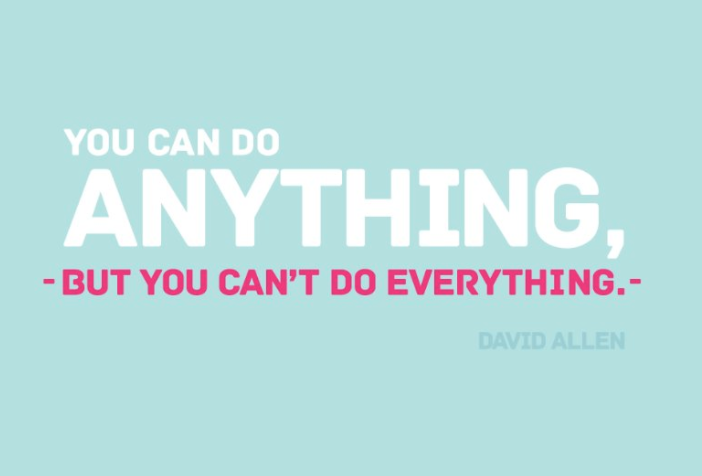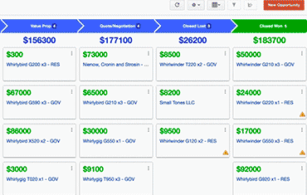When you think of the word “pipeline,” what comes to mind?
If you’re like most business owners, you probably think of the sales process. Leads, opportunities, and new customers are all top of mind.
Although sales pipelines are vital to any company, a “project pipeline” can be equally useful from an operations standpoint. If you’ve never configured a project pipeline in Insightly, think of it as a way to avoid re-creating the wheel. Pipelines are great for things that follow a predictable pattern. As a project advances from one stage to the next, Insightly can even auto-assign tasks to individual users
In this post, I’ll share ten ideas for putting project pipelines to good use.
1. Hosting a Customer Appreciation Conference
Your customer base is growing. To show your appreciation and keep them informed, you’ve started hosting an annual conference. Pulling off this event requires a ton of coordination and planning. The first year had its share of bumps along the way. However, you’ve since developed a rhythm for organizing the conference.
Rather than keeping a handwritten checklist or spreadsheet, why not build a project pipeline? This way, when the conference rolls around next year, you can simply add the new event as a project and, magically, all of the necessary steps are preserved from the prior year. For example, your conference pipeline could have the following stages:
- Preliminary planning
- Venue planning
- Official announcement
- Event promotion
- Collateral
- Day-of priorities
- Post-event follow ups
As you complete all of the associated tasks for a particular phase, your project pipeline helps you know what to work on next. After all, there’s no point working on an official announcement until you know where the event will occur.
2. Scaling Your Content Marketing
To get found on the search engines, you need to regularly publish excellent content. This often sounds easier than it really is. Your subject matter experts are too busy to sit down and write 1,000-word posts. Even if they had unlimited time, each writer has a slightly different style. It’s therefore no wonder why so many companies fail to produce content. Too many moving parts, and not enough foresight.
A pipeline can be a great tool for structuring (and scaling) your content marketing efforts. Break the process down into bite-sized, repeatable chunks, such as:
- Topic pitch
- In-process
- Editing
- Approval
- Publishing
- Live
For added firepower, you might try adding activity sets to your content marketing pipeline. This will keep everyone on task and reduce unnecessary confusion.
3. Exhibiting at Trade Shows
Your company exhibits at a handful of important trade shows each year. Although the events are at different locations, they all follow the same general sequence:
- Reserving the booth space
- Paying the vendor
- Making travel arrangements
- Ordering swag and brochures
- Shipping the booth to the exhibit hall
- Traveling to the event
- Setting up the booth
- Exhibiting
- Tearing down the booth
- Traveling back
- Following up with leads
- Evaluating ROI
To deliver a more streamlined pipeline, it might make sense to break this sequence down into less specific phases:
- Event sign up
- Pre-event planning
- Day-of event
- Post-event priorities
Remember, you can always link tasks to stages for a more detailed event plan. Traveling back, following up with leads, and evaluating ROI would be logical tasks to associate with your post-event phase.
4. Creating Your Social Media Plan
Social media isn’t just for your middle school niece.
Smart businesses leverage social media to drive conversions and increase customer engagement. One strategy for achieving this goal is to routinely publish share-worthy content. Unfortunately, great content doesn’t fall from the sky.
Creating a social media production pipeline can help you optimize the process. If you aim to produce on a weekly cadence, consider these phases:
- Collect content
- Draft plan
- Approval
- Scheduling
- Reporting
Depending on your preferences, you might choose to reuse the same project for future social media plans. This would be beneficial if you want to centralize all social media-related chatter into a single record.

If that’s not important to you, just ask your social media manager to create a fresh project each week (incorporating the same pipeline, of course). Is your social media manager somewhat forgetful? Assign a recurring task with explicit instructions and due dates, ensuring no weeks go by without a new social plan.

5. Fulfilling Customer Orders
Order fulfillment is the perfect use case for an Insightly project – especially when combined with a pipeline.
Let’s say that your company offers a variety of handmade leather products. Your catalog offers a few dozen SKUs, and your customers are online retailers and brick-and-mortar shops. When customers place orders, they typically do so by submitting a purchase order for several dozen units.
Although each SKU is unique and has a slightly different lead time, it’s safe to say that production follows this general workflow:
- Material sourcing
- Production scheduling
- Manufacturing
- Quality assurance testing
- Packaging
- Shipping
- Payment
It’s also worth noting that as pending deals become orders, Insightly allows you to convert opportunities into projects. This provides a 360-degree view of each customer’s order. Doing so also preserves all related emails, notes, and files. As the order advances through the manufacturing process, your team will have fingertip access to everything they need to do their jobs. No more hunting for information – it’s all right there in the electronic project file.
6. Performing Routine Website Maintenance
The web presents countless opportunities for today’s business owner. However, opportunity is not without risk. The internet is no exception to this rule.
Some business owners falsely assume that websites are a “set it and forget it” proposition. Not so, especially from a web security standpoint. In an age when government agencies and well-known brands are hacked, prudent business owners take steps to protect their online assets. One important step involves keeping your content management system up to date.
A pipeline can help bring order to your web maintenance program. If you’re using an open source CMS, your pipeline stages might look something like this:
- Backups
- CMS update
- Plugin updates
- Testing
- Backups
- Documentation
7. Recruiting Freelancers
It’s easier than ever to hire freelancers. Millions of freelancers are available via virtual work platforms, such as Upwork.com. And, the benefits of hiring freelancers are quite obvious to your business: no long-term commitments, less paperwork, and better talent.
As you add more virtual team members, you’ll need a better way to recruit and onboard them. Project pipelines can help you automate your freelancer management. For example, you could build a pipeline with these stages:
- Job post
- Invitations
- Shortlist
- Interviews
- Hire
- Onboard
As you use your pipeline to bring on more freelancers, Insightly can also automate some of the administrative tasks, too. If you’re a Pro or Enterprise user, you’re able to harness workflow automation to your advantage. Why is this helpful? Well, let’s say you want to automatically send new hires a welcome email shortly after onboarding. Insightly can send emails on your behalf, taking one more task off your overloaded to-do list.
8. Closing Out Your Books
We’ve all heard the saying about the two certainties in life: death and taxes.
Depending on your business model, taxes come due at many different points in the year. Estimated taxes are usually due on a quarterly basis. Sales tax varies by the state you’re in. And, your annual tax returns, always come due on (or around) April 15th.
For the sake of discussion, let’s focus in on your annual tax returns. Although you pay your CPA to “close the books” each year, there’s a fair bit of coordination on your end:
- Collect 1099s / docs
- Reconciliations
- Summary for CPA
- CPA work
- Review & approve
Since this process only rolls around annually, you probably find yourself reinventing the wheel each year. Once again, a well-structured activity set can help you know exactly what to do next. For the “summary for CPA” stage, you might associate a task that contains links to your reporting template along with detailed work instructions.
Stop starting over each year – put last year’s knowledge to good use!
9. Evaluating Software
Cloud-based software is revolutionizing how business gets done. For every problem, it seems there’s at least several tools that offer a solution.
Some companies make the mistake of having no formal software selection process. Departments are free to define their own internal selection criteria – or, worse, use no criteria whatsoever. To provide a little more structure to your team’s software selection, build a basic pipeline like this:
- Needs analysis
- ID vendors
- Demos
- Shortlist
- Selection
Even a simple pipeline (like the one outlined above) can provide your team with just enough direction to make an informed decision.
10. Mining for New Leads
Let’s bring this discussion full circle.
As I stated at the beginning of the post, many people associate the word “pipeline” with the sales process. If you’re still having a hard time associating pipelines with projects, here’s an example that might bring it together: data mining for leads.
It’s quite common for sales reps to spend a few hours each week mining for leads. Web forums, social media groups, and industry directories can be excellent sources. Sadly, not every rep knows what to do when instructed to “do some lead research.”
Bring order to the lead mining process with pipelines. The pipeline phases could be as simple as:
- Check sites
- Add leads
- Done
Obviously, you’ll want to spend time building out the first stage and include helpful tips. Would it make sense to trigger an activity set for each site to check? Or, would a single task with detailed instructions make more sense? It really depends on your business, but either solution is better than nothing.
Get Creative with Project Pipelines
I hope that this article has gotten your creative juices flowing. As you can see, project pipelines can really be a game changer when it comes to creating a more systematized business. Now, go out there and get creative with pipelines!

Matt Keener is a marketing consultant and President of Keener Marketing Solutions, LLC. Matt specializes in content marketing and strategic planning, having helped numerous Saas (software as a service) companies and other small businesses worldwide. Read more of Matt’s work, get his book, or connect on LinkedIn.









































